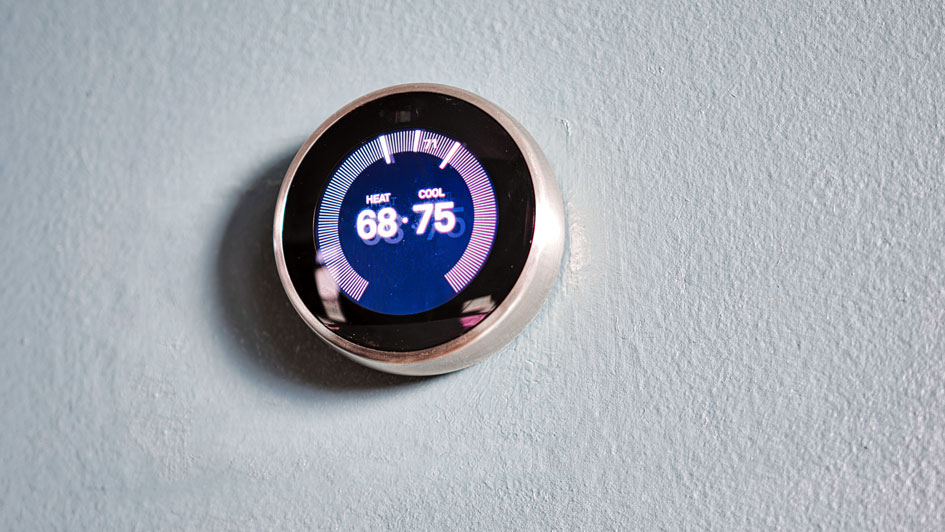
A Nest Thermostat is an excellent tool for keeping your home comfortable, regardless of the season or weather. With a number of innovative features meant to maximize efficiency, convenience and comfort, a Nest Thermostat is an excellent choice to help you manage your energy use — keeping costs down in the process.
That’s why more people are looking to add devices like a Nest into their home. To add one to your home, reach out to an expert for smart thermostat installation in Houston.
From auto scheduling to optimizing energy efficiency, Nest makes controlling the climate of your home effortless.
Want all the details? Take some time to review these 12 things you should know about your Nest Thermostat.
1. Resetting Your Nest Thermostat
The first thing to know about resetting a Google Nest Thermostat is that resetting is different from restarting.
- Restart: A common feature in consumer electronics, including your phone or computer, restarting your Nest Thermostat simply turns it off and then back on. This maintains all your settings and is a step to take if your Nest is frozen or not connecting to Wi-Fi.
- Reset: A more drastic function, a reset should restore your Nest to its original settings from the manufacturer. People normally only use a reset as they're moving homes and bringing the thermostat with them, or if they just want to erase any personal details from the Nest before leaving it for the next homeowner.
If you want to perform a reset, it helps to record existing temperature settings so reapplying them is faster. Next, go to Settings -> Equipment and write down the details about your system wires, heating type and safety temperature settings.
After writing down this information, go to Settings, select Reset and press. You can choose from five options:
- Restart: Deactivates your Nest and starts it back up while remembering your settings. You can also press the outside of the Nest and hold it down for a few seconds until it goes black, at which point you can remove your hand.
- Schedule: This reset setting clears your entire temperature schedule—including for your hot water, if that has been connected to your Nest. By choosing this kind of reset, you’ll have to input a new schedule or wait until the Nest learns your schedule.
- Away: An Away reset removes anything your Nest has learned about how often you walk by, so that it can change the temperature accordingly.
- Network: By selecting a network reset, it will remove all your network information and your Nest will no longer be connected to Wi-Fi. It also forgets your Wi-Fi password.
- All Settings: Self-explanatory, an All Settings reset strips away all your personal settings and learning.
2. How to Connect Nest Thermostat to Wi-Fi
Staying connected to your Wi-Fi is important to getting the most out of your Nest.
To connect your Nest to the internet:
- Open the Quick View menu by turning the thermostat ring.
- Select the Settings icon.
- Press Network.
- Once your Nest scans available networks, find your Wi-Fi and, if necessary, put in your password.
3. Does a Nest Thermostat Use a Battery and How Long Will the Battery Last?
Nest thermostats receive power from your HVAC system, but each one also features a rechargeable lithium-ion battery for backup power in case of an outage. According to Google, the maker of Nest, a Nest Thermostat battery should last several months. Recharge it with the USB cord that comes included.
4. How to Turn Off a Nest Thermostat
If you won't be home for a while, consider setting your Nest Thermostat to Off mode, though Eco mode is another solid choice. Using Off mode will turn off all of your regular heating and cooling schedules, although the Nest will still use your Safety Temperatures to keep your home from getting particularly hot or cold.
To find Off mode on the thermostat:
- Hold the touch bar until the display reads “Turn Off” before sliding the bar to highlight Turn Off, and then touch the bar to select.
- Or, from the main menu, go to Mode and select Off.
Off mode can even be accessed from your Google Home app:
- Select Thermostat from home screen
- Tap Temperature mode
- Select Off
5. Is Alexa Compatible with a Nest Thermostat?
Yes, your Amazon Alexa can be used to control a Nest Thermostat. Alexa can also be integrated with with Nest doorbells and cameras. Google's own voice control technology, like Google Assistant, can be used to operate your Nest.
6. Can a Nest Thermostat Function Without Wi-Fi?
The good news is that a Nest Thermostat can control the temperature of your home without Wi-Fi. At the same time, a lack of an internet connection means your Nest doesn’t have the ability to use the smart functions that most people enjoy.
7. Can You Lock a Nest Thermostat?
If different members of your family can't agree on the ideal temperature, Nest offers a handy feature that keeps things simple.
A user can 'lock' the Nest to stop any temperature adjustments outside of a preset range. This won't mean you have to make do with just one temperature—a locked Nest still has access to programmed settings—but simply prevents other users from constantly changing the settings.
If you want to lock your Nest:
- Press the Settings icon, scroll to the bottom and tap on Lock.
- Enter a 4-digit pin number you can remember, and then enter it twice.
- To lock your Nest in Heat or Cool mode, select your maximum and minimum temperature range before tapping Lock at the bottom of the screen.
For unlocking it, open the settings and choose Unlock. After you've entered the 4-digit pin, the Nest will be unlocked.
8. How to Control a Nest Thermostat from a Phone
Nest thermostats can be controlled by your Google Home app, which is accessible on your phone or desktop computer. Other versions of Nest, including the Nest Thermostat E and Nest Learning Thermostat, are also compatible with remote control via the Nest app.
Before you can control a Nest on your phone with Google Home or the Nest app, you need to follow a few steps:
- Download the Google Home app or, with premium Nest models, the Nest app to your phone.
- Plug in your Nest Thermostat.
- Access the Google Home app on your phone and complete the setup process, link to your new device and connect to Wi-Fi.
- Google offers a more in-depth setup tool, if you would like more assistance in connecting.
Once you’ve added your Nest to your Home app, it's accessible by clicking Thermostat on the home screen. Once you do that, making adjustments is done by dragging your finger along the screen or tapping on a plus or minus sign.
You also can change preset Nest temperatures on the app. From the home screen, select Thermostat before selecting Settings. At this screen, press Temperature Preferences and then Temperature Presets. The display will show your preferred Comfort, Eco and Sleep temperatures. By selecting one of those three options, you can change the temperature for that preset.
9. Setting a Nest Thermostat Schedule
You can set a temperature schedule on a Nest Thermostat either on the device or on the Google Home app. Newer and advanced models of the Nest, such as the Nest Thermostat E and Nest Learning Thermostat, can also be adjusted by using the Nest app.
You have two primary ways to establish a temperature schedule on a Nest Thermostat:
- Quick Schedule: The Quick Schedule feature is based on the national average schedule for energy efficiency. When you are setting up your Nest, the Google Home app allows you to change the temperature with a schedule. If you select this feature, it will show a preset schedule before letting you customize it. Once setup is complete, that’s the schedule it uses.
- Temperature Presets: To change the temperature presets on your Nest, open the Google Home app and press Thermostat. Then, tap Presets and choose Edit. After the changes are complete, select Done.
To make tweaks or changes to your current schedule, open the Google Home app, select Thermostat and then tap on Schedules. Find the time of week you want to add a temperature to. Once you pick the day, tap Add and select the preset you want. Finally, select Time before touching and dragging the numbers to change the time. Your update won't be applied until you select Done.
10. How to Set a Temperature Range on a Nest Thermostat
The Nest features an Eco mode ideal for setting custom temperature ranges. A key part of this feature is the Nest's ability to adjust the temperature based on whether it detects you at home or not.
To create a custom temperature range in Eco mode, go to Settings and select Eco. The display will show any current “Heat to” and “Cool to” temperature settings. You can select each and make your preferred changes. Once you're finished, select Done.
11. What to Do if a Nest Thermostat Is Not Compatible
Nest thermostats are compatible with most heating and cooling systems. Google, Nest's manufacturer, has an online compatibility checker that shares questions concerning your location and current setup to learn which Nest model would be compatible with your system.
If you have a Nest and believe it’s not compatible with your system, consider reaching out to professionals for smart thermostat installation in Houston. An experienced technician will be able to evaluate your system and, if your Nest is compatible, install it quick so you can jump right into the savings and convenience.
12. How Do I Manually Control My Nest Thermostat?
Nest Thermostats are loaded with innovative features designed to make life more comfortable and save money. However, you have the ability to turn off the smart features if you prefer manual controls similar to normal thermostats.
Don't forget, by doing this you clear all your temperature schedules and your Nest will work like any other thermostat—it will display the temperature and allow changes, but that’s about it.
You can achieve this by disabling the settings in a series of steps:
- Auto-Schedule: From the main screen, go to Settings and then scroll to Nest Sense. Go to Auto-Schedule, select No and click Done.
- Eco: From the main screen, go to Settings, scroll to Eco. Once in Eco, select Off for both the Heat to and Cool to temperatures, before selecting Done.
- Home/Away Assist: From the main screen, go to Settings and select Home/Away Assist. Then, select Stop Using and click Done.
- Reset: After you've cleared the settings, reset your nest. From the main screen, go to Settings and select Reset, highlight Schedule and then select Reset to clear out any saved scheduling data.
